Asakusa's FEBRUARY KITCHEN: Hojicha Brewed by a Japanese Tea Barista!

Green tea has been enjoyed in Japan since ancient times. Today we'll feature hojicha, a type of roasted green tea with a distinct aroma. At Asakusa's FEBRUARY KITCHEN, the tea barista introduced us to a variety of unique green tea beverages and tips on how to brew it at home.
Recommendations From a Japanese Tea Barista
When you think of Japanese green tea, what comes to mind?
"There are countless varieties of Japanese green tea, each offering a distinct flavor. These include matcha (green tea powder), sencha (regular green tea), genmaicha (roasted brown rice tea), and special teas unique to each area of Japan."
"For those who want to enjoy the aroma of tea, I highly recommend hojicha (roasted green tea). It has less caffeine compared to other green teas, so you can drink it at any time of day."

Picture courtesy of Yoshihiko Kurahashi
The comments above were made by the Japanese tea barista Yoshihiko Kurahashi.
Mr. Kurahashi is involved in the development and production of green tea. He also holds many workshops and other tea-related events. He even serves as the manager of FEBRUARY KITCHEN, a specialty cafe in Tokyo's Asakusa district!
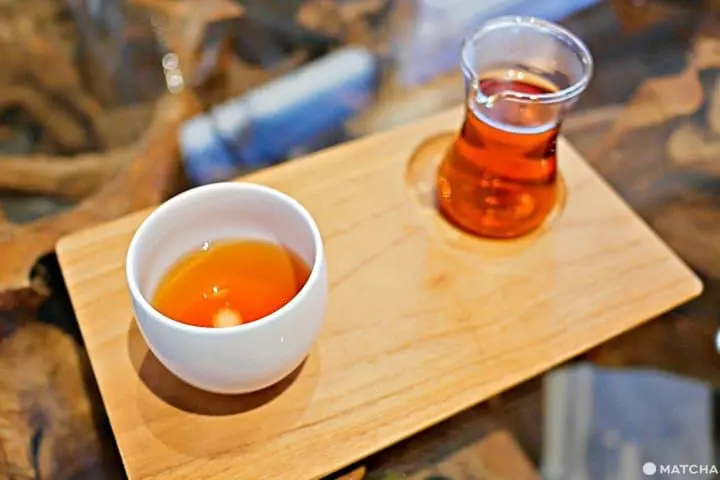
Hojicha is a type of green tea in which the leaves are roasted. Distinguished by its brown-colored tea leaves, the beverage has a distinct aroma. It also has about one-third the caffeine content of coffee. Best of all, it's not bitter as other green teas and has a refreshing taste.
In this article, we interviewed Mr. Kurahashi about the exclusive hojicha green tea, hojicha latte, and tasty sweets available at FEBRUARY KITCHEN. We also learned the secret to making delicious green tea at home.
High-Quality Hojicha With an Attractive Aroma
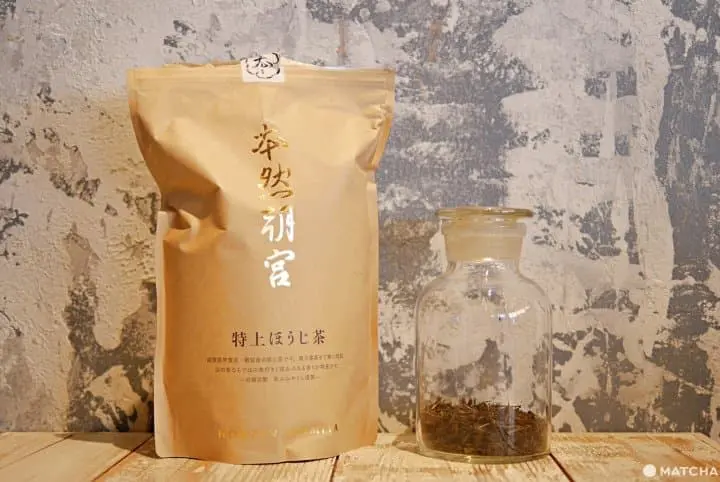
The hojicha used at FEBRUARY KITCHEN is grown in Asamiya, Shiga Prefecture. Located in the southern region of Shiga, Asamiya is close to the neighboring city of Kyoto.
The tea leaves in this region are cultivated at high elevations on mountain slopes. Mr. Kurahashi visited this area personally and selected these tea leaves after speaking with the tea producers himself.
Mr. Kurahashi has a full understanding of green tea production and is well versed in the different varieties from each region. According to him, the aroma of Asamiya tea leaves is by far the best, adding to their attraction.
Mr. Kurahashi explained, "In particular, the hojicha has a refreshing taste and distinct fragrance that lingers on your palate."
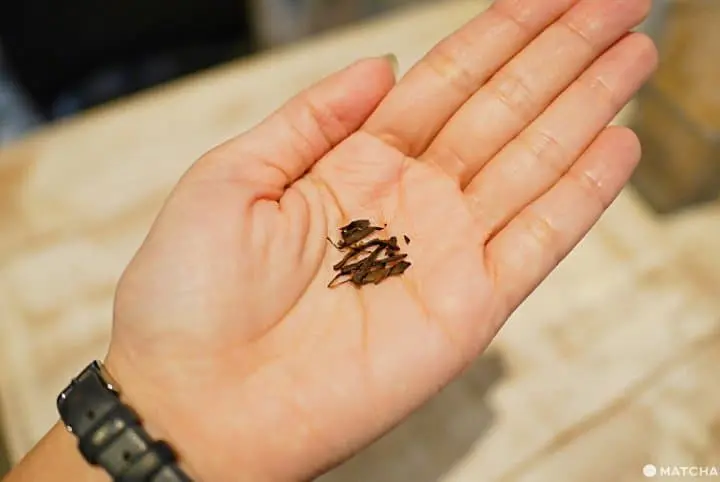
When you pick up the tea leaves, you can instantly smell hojicha's distinct fragrance.
However, the reason he was drawn to Asamiya's hojicha wasn't simply its aroma.
He further commented, "At Asamiya, hojicha is exclusively made with first-flush tea, so the umami flavor and sweetness really stand out. When these first-plucked tea leaves are roasted, the balance between fragrance and taste comes out perfectly."
Typically, hojicha is blended with leftover leaves and then roasted. If the tea leaves are harvested later, the tea tends to have a bitter aftertaste.
On the other hand, Asamiya tea leaves are picked during the period that produces the most delicious tea. These leaves are then used to make hojicha. Tea producers are constantly creating new ways for consumers to enjoy the natural aroma and flavor of tea.
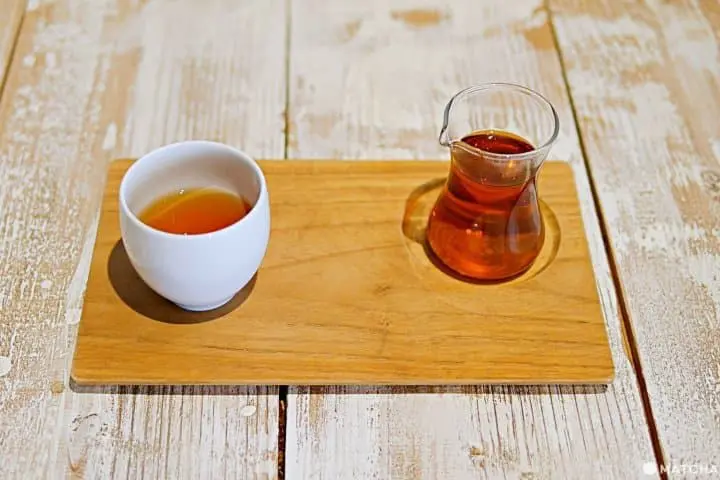
Hojicha (550 yen after tax)
Next, Mr. Kurahashi made us some freshly brewed hojicha.
As you raise the teacup, you're greeted by the tea's rich aroma. One sip, and you'll be entranced by the delicate sweetness of the beverage. It's so refreshing! Since there's no bitter aftertaste, I felt relaxed while sipping the tea.
FEBRUARY KITCHEN: Nestled Along a Back Alley in Asakusa
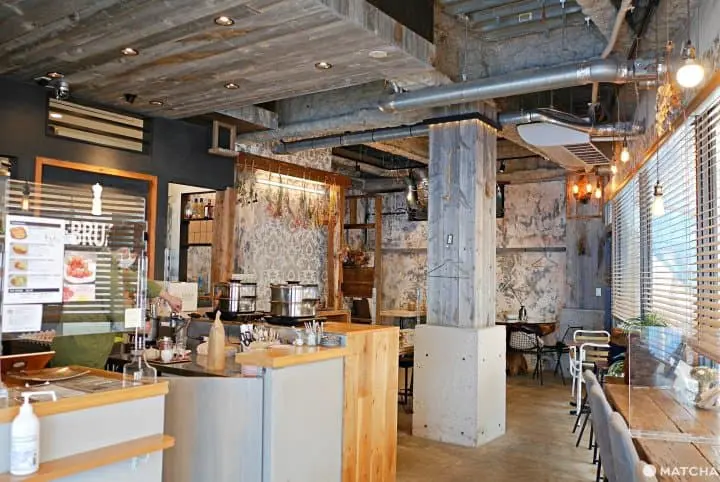
FEBRUARY KITCHEN, Mr. Kurahashi's cafe, is located next to Japan's oldest amusement park, Asakusa Hanayashiki. The interior's low-key color scheme creates a comfortable ambiance. The individual seats have ample space, so customers can spend their time relaxing in comfort.
In addition to hojicha, the cafe has an extensive menu that includes pudding topped with burnt caramel sauce (700 yen after tax), colorful ice cream sodas (750 yen after tax), and Tokyo Omu-Napolitan (1,100 yen after tax). This dish is a combination of an omelet filled with ketchup rice (omurice) and Spaghetti Napolitan.
You'll want to head to this popular shop for lunch and indulge in a refreshing beverage!
Hojicha Latte: Perfect for Diners Who Like Sweet Drinks!
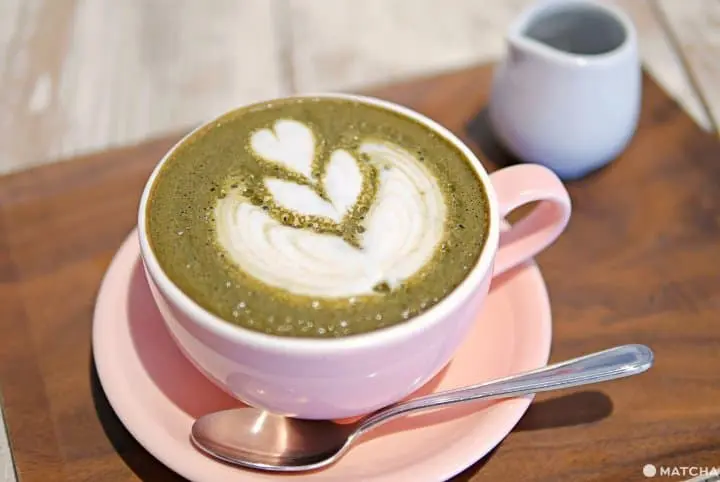
Hojicha latte (600 yen after tax)
If you don't usually drink green teas, we recommend a sweetened hojicha latte. Customers can even adjust the level of sweetness! Just like matcha green tea, the hojicha tea leaves are first ground into a powder with a millstone. While matcha powder is typically dissolved in hot water, this hojicha latte is made with steamed milk.
Compared to regular coffee drinks, the hojicha latte has a faint green color (see photo above). The mild taste goes down smooth, leaving a pleasurable sensation on your tongue.
For the hojicha latte, Mr. Kurahashi explains that he searched for tea leaves that would impart their true flavor and aroma, even when grounded into a powder. He ultimately chose a hojicha from Kyoto.
Mr. Kurahashi added, "By the way, when you're on the lookout for tea, it's a good idea to give the tea leaves a little taste. Tea leaves that taste good when eaten also make delicious tea." Apparently this is because the tea leaves are packed with great flavor and aroma.
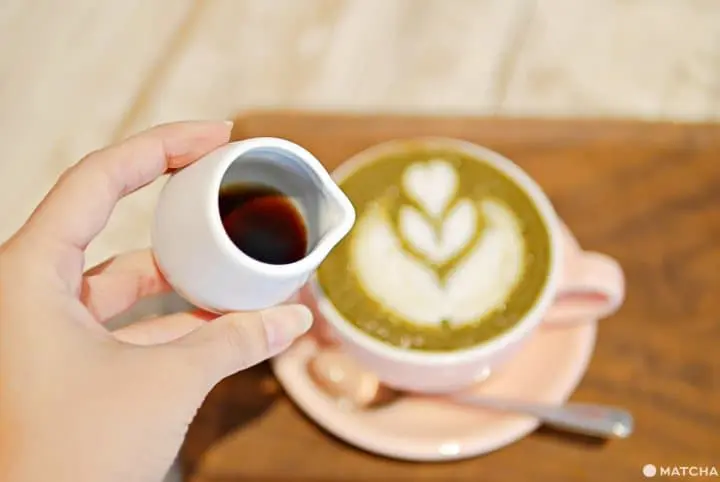
The hojicha latte comes with a side of molasses syrup, which brings out the beverage's sweetness.
Recommended Sweets: The Perfect Match for Green Tea Drinks!
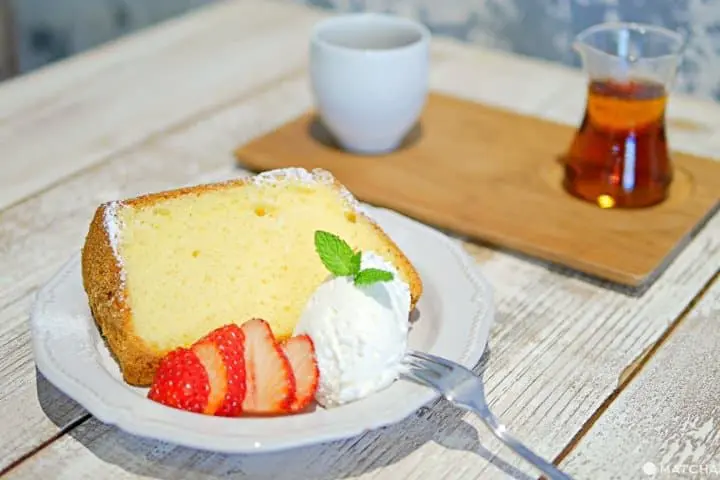
Fluffy chiffon cake made with rice flour (500 yen after tax)
If you're ordering green tea, you may want some sweets to accompany your drink.
The staff at FEBRUARY KITCHEN recommends the chiffon cake (made using rice flour), a tasty dessert that pairs well with hojicha. The straightforward flavor of the roasted green tea brings out the sweetness of the chiffon cake and whipped cream.
"Whipped cream, products with eggs, and chocolate-related sweets all go well with hojicha. In fact, hojicha is the perfect match for shortbread cookies," he said.
The chiffon cake is also garnished with seasonal fruit. Strawberries were served at the time of our interview. Fruit that's sweet and tart is very compatible with hojicha tea.
Purchase Tea Leaves and Recreate This Drink at Home!
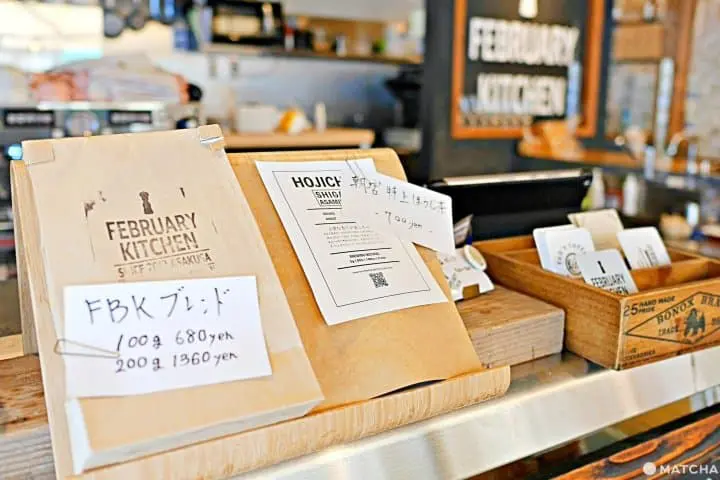
Asamiya Special Hojicha (700 yen after tax). Basic tea recipes are written on the side of the package.
The tea leaves used in FEBRUARY KITCHEN's hojicha latte can also be purchased at the shop.
If you're interested in brewing delicious hojicha at home, Mr. Kurahashi first suggests finding out which tea flavor you prefer.
He said, "There is a standard method for brewing green tea, but everyone has their own taste preference. Some like their tea sweet, while others prefer something slightly bitter. I think the best approach is to start with a basic recipe and adjust the taste according to your liking."
For example, if the water's temperature is too hot, the tea leaves will unfold quickly and increase the tea's astringency. If you don't like bitter flavors, we've been told that it's best to transfer the teapot's water into a cup, then pour it back into the teapot. This will adjust the water temperature.
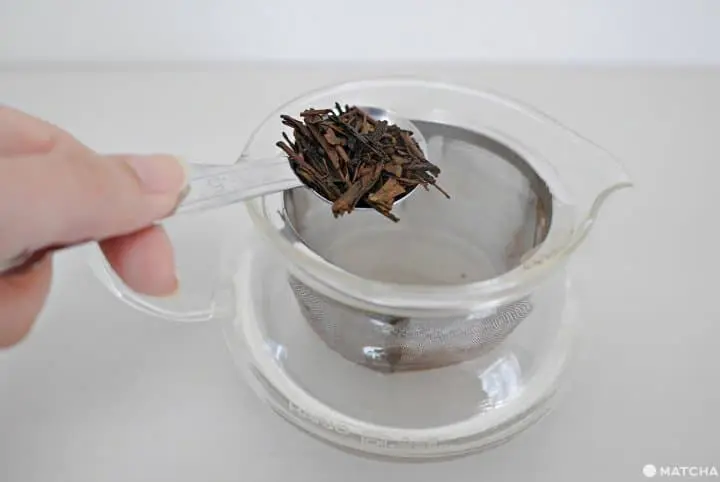
But what if you want to enjoy a good-tasting cup of tea without spending a lot of time preparing it?
One method is to first pour boiling water into a teapot, and then add the tea leaves afterward. This allows the tea leaves to gradually open and controls the level of astringency.
By the way, whether or not you use a special pot for green tea isn't important. Rather, it's more a matter of personal choice. The most important thing is to enjoy the time spent brewing your green tea. So, by all means, enjoy the experience by using your favorite teapot.
Mr. Kurahashi's YouTube Channel: If You're a Green Tea Lover How About Roasting the Leaves Yourself - It's Easy to Make Hojicha at Home! (Japanese)
Experience Japanese Culture Through Green Tea
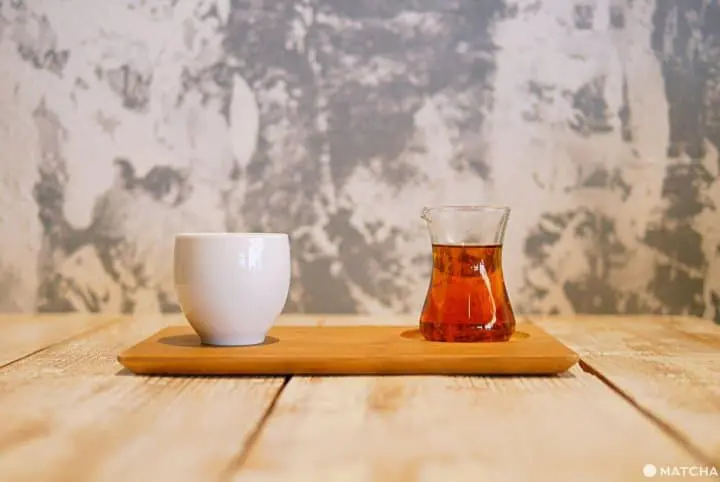
We asked Mr. Kurahashi what first attracted him to the world of green tea.
"One time when I went to a green tea shop, I had the opportunity to experience green tea with all five senses." He mentioned the sounds and techniques as the tea was brewed, the time spent waiting, and the depth of flavor upon his first sip.
This experience made him realize that green tea was a doorway to experience Japanese culture.
Japanese tea culture has been passed down from generations. One great way to learn more is by drinking green tea and savoring its delicious flavor!
Read also
In cooperation with FEBRUARY CAFE







































![[Coupon Available] Attention Overseas Winter Sports Fans! Nagano's Sports Depot Has Evolved](https://resources.matcha-jp.com/resize/720x2000/2026/01/05-254819.webp)
![[2 hours from Tokyo ] 10 Quiet and Breathtaking Views of Mount Fuji in Yamanashi Hokuto City , Yamanashi - Part 2](https://resources.matcha-jp.com/resize/720x2000/2025/12/16-253037.webp)

![[Reopening in March 2026] Ikoma Sanjo Amusement Park Park, 45 minutes from Osaka , with free admission](https://resources.matcha-jp.com/resize/720x2000/2024/08/28-194409.webp)